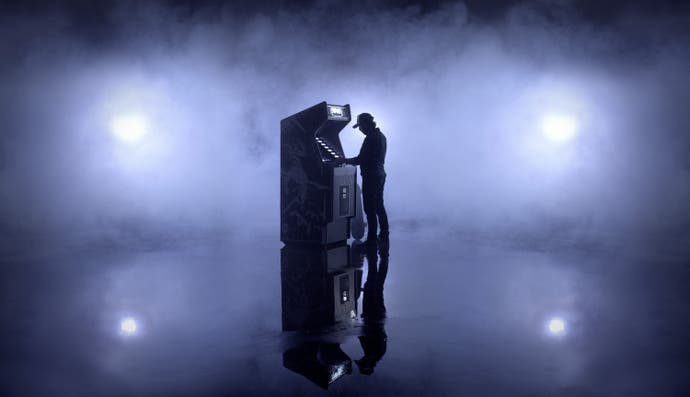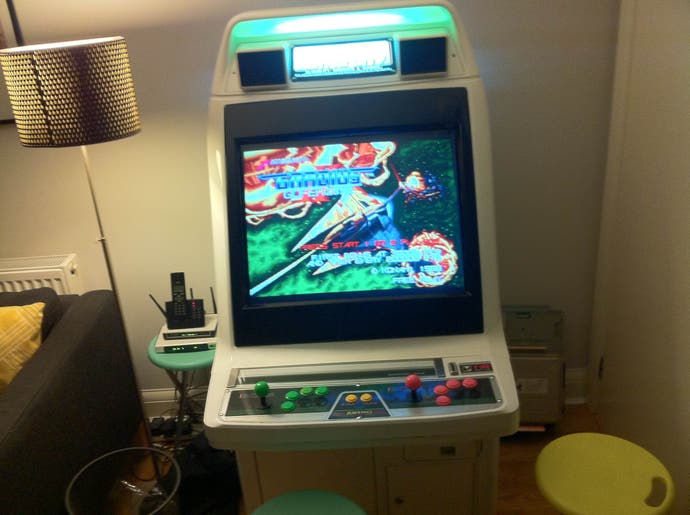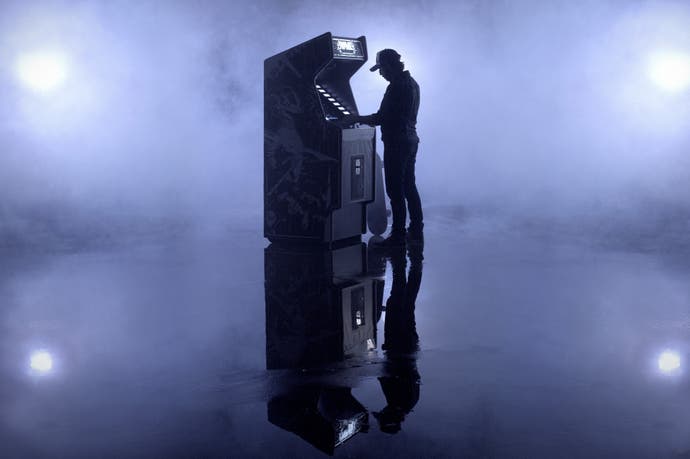Saturday Soapbox: The magic of dedicated hardware
Is the spread of technology diluting the power of games?
One of the greatest silent films is also one of the hardest to watch. It's not the bum-numbing run-time of five and a half hours that makes Abel Gance's 1927 film Napoleon such a challenge, though, but rather its final reel, split as it is across three projectors in a triptych set-up that was hard to accommodate at the time of its release and is now next to impossible to replicate in contemporary screens, where you'd be lucky to find a single 35mm projector sitting next to the all-devouring modern digital models.
It's a set of circumstances that makes its screening at London's Royal Festival Hall later this year so special, and it's something I was reminded of last week when speaking to a couple of enterprising Argentinians who've created a one-off arcade cabinet that's the only way to play Nave, their doujin-flavoured shooter (on which there'll be more on the site later next week.) Perhaps it doesn't quite share the same scale and sweep as Napoleon, but in being a bespoke creation it shares some of its magic, and a lot of its intrigue.
I've always had a soft spot for games that demand dedicated hardware (hey, there's even a place for Tony Hawks: Ride in my heart), and I think it stems from a deeper belief about how games are best played. You shouldn't really ever play Asteroids without the clean white lines of a vector display searing into your eyes, just as you shouldn't play Gradius 2 without bathing in the warmth of a CRT, and a Street Fighter 4 dragon punch isn't really real unless it's been conducted through the crisp press of a Sanwa button.

It's snobbery, yes, but I'd like to think there's more to it: it's about playing something as it was originally intended. I reckon I'm in decent company in that regard, if David Lynch's famous comments a handful of years back about watching films on phones are anything to go by. "You'll think you'll have experienced it, but you'll be cheated," Lynch said as the trademark calmness lent by his transcendental meditation started to slip. "It's such a sadness that you think you've seen a film on your f****ng telephone. Get real."
I felt similarly sweary earlier this week when excitedly running towards an upright arcade cabinet standing in the canteen of a big budget developer, only to be met by the horror of a PC monitor sitting where once a glorious 19-inch CRT TV was, the 2D artwork of the emulated King of Fighters 96 it was running bleeding nastily out of the crudely masked HD screen. (I look dimly upon emulation, even though I acknowledge sometimes that's the only way to play certain games. Still, if a game's really worth playing, surely it's worth tracking down in its original and purest state.)
I didn't think, though, that my prejudices would haunt me when I recently joined the PC master race, but that's exactly what's happened. There's something wonderful about the roll-your-own ethos of PC gaming, about the customisation and the sheer power that's at your fingertips: the first few days of PC gaming were a fuzzy dream where current generation games like BioShock Infinite and Far Cry 3 all of a sudden became glimpses of the future and it's totally true that, for PC gamers, the next generation arrived some time ago.
So why is there this curious unease whenever playing PC games that I don't get when playing their muddy console counterparts? Why is there a nagging feeling when playing BioShock Infinite at 1080p and 60fps that I'm missing out on something, a feeling that was largely absent when playing the relatively lo-res, 30fps Xbox 360 version?
A large part of it's that horrible desire that's likely overcome every PC player: the lust for more power, now. All of a sudden, 1080p and 60fps isn't enough, and all that's whirring through my mind when breathing in Columbia is the thought of all those unchecked boxes in the graphics set-up, and what it's going to take to check them. But it nagged away at something else as well: perhaps BioShock Infinite, a game designed to be played across limitless permutations of hardware, doesn't have a definitive version, and that's something that makes me a little sad.

It's not something unique to games, really: there are just under 30 different versions of Gance's Napoleon around, and they're spilled out across different formats, from Francis Ford Coppola's 24fps 1980 version in 35mm and 70mm to a 4:3 television and DVD cut through to the full-blooded 20fps restoration that's currently on tour (how alien it seems to the world of video games that the superior version is the one where the frame-rate is not necessarily the highest.)
There's a difference, though, in that the latter version is one that's been painstakingly reclaimed and restored through more than 50 years of work by film historian Kevin Brownlow to recreate Napoleon as Gance intended it in 1927. Is there a definitive version that Irrational had in mind with BioShock Infinite, and which one should we return to in 80 years time? It's a fluffy-headed question, sure - games only truly come alive in our interaction with them, and that's something that presents its own problems of preservation - but it's another variable that will make returning to past classics that little harder for future generations.
It's something else as well, though. I can't help but feel that games lose a little something when they're spread across multiple systems, and when they're designed to accommodate so much different hardware. Some of the authorial authority leaves, some of the strength of vision is weakened, and the magic that happens when a visionary twists a sole piece of technology to their will just isn't possible - a point that's as true with games today as it was in the era of silent cinema.


.png?width=291&height=164&fit=crop&quality=80&format=jpg&auto=webp)






